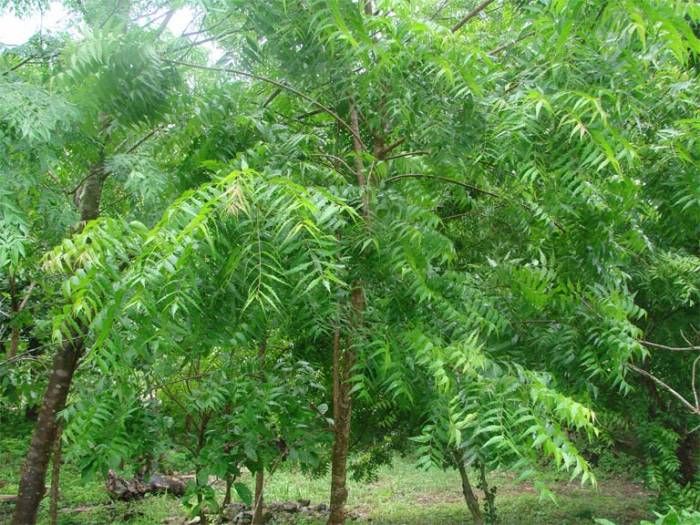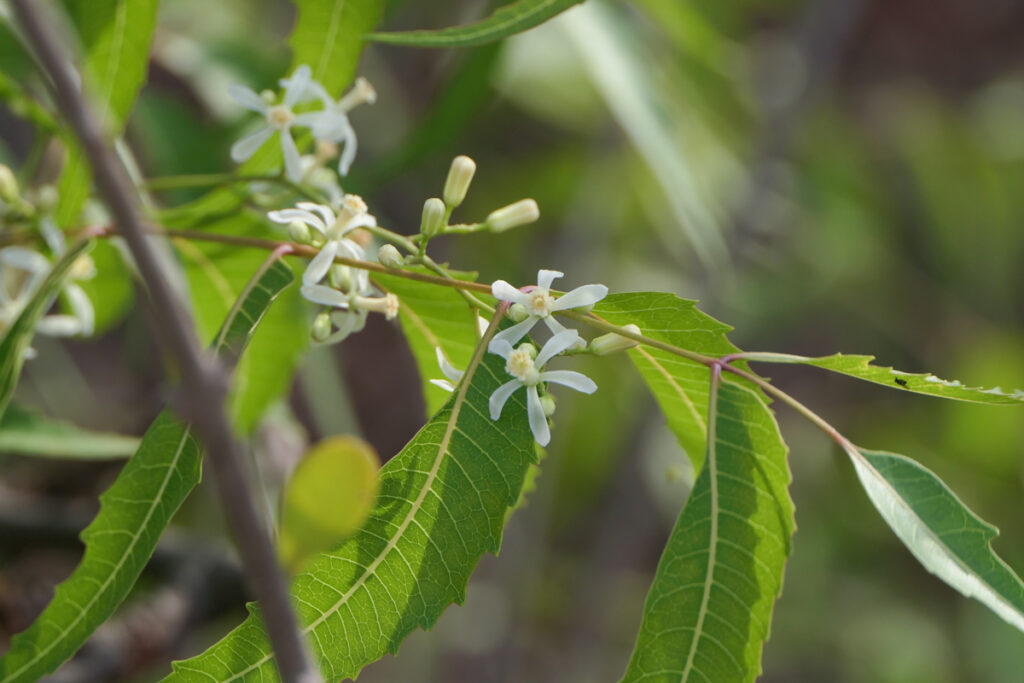Neem tree (Pokok Mambu)
Azadirachta indica
Description
Azadirachta indica is a fast-growing tree growing up to 30 m tall. Neem tree features rounded crowns with thick, wrinkled bark that is grey outside and reddish on the inside, deeply fissured and flaking in old trees. Leaves are compound with toothed leaflets, alternate, and tends to cluster near the end of the branches. Flowers are borne in a branched cluster, small, white or pale yellow, and slightly scented. Fruit is small, oval, green when young and ripen to yellow or purple. Neem trees are hardy and resilient, thriving in poor, rocky soils and tolerating a wide variety of environmental conditions.
Place of origin
Indian subcontinent
Ethnobotanical uses
The wood is used for construction, furniture and plywood as it is hard and termite resistant. Young twigs and flowers are sometimes boiled and eaten as vegetable. In India, people bathe in water with neem extracts to treat health problems such as boils, ringworm, ulcers and rheumatism. It is a sacred tree to the Hindus and often used in traditional Ayurvedic medicine. Neem tree contains Azadirachtin, which have insecticidal, antibacterial, antifungal and anti-inflammatory effects. Oil extracted from the seed is used to make soap, toothpaste, lotions and pesticides. The residue after oil extraction (Neem cake) is used as livestock feed, as well as fertilizer.
IUCN conservation status
Least Concern (LC)



